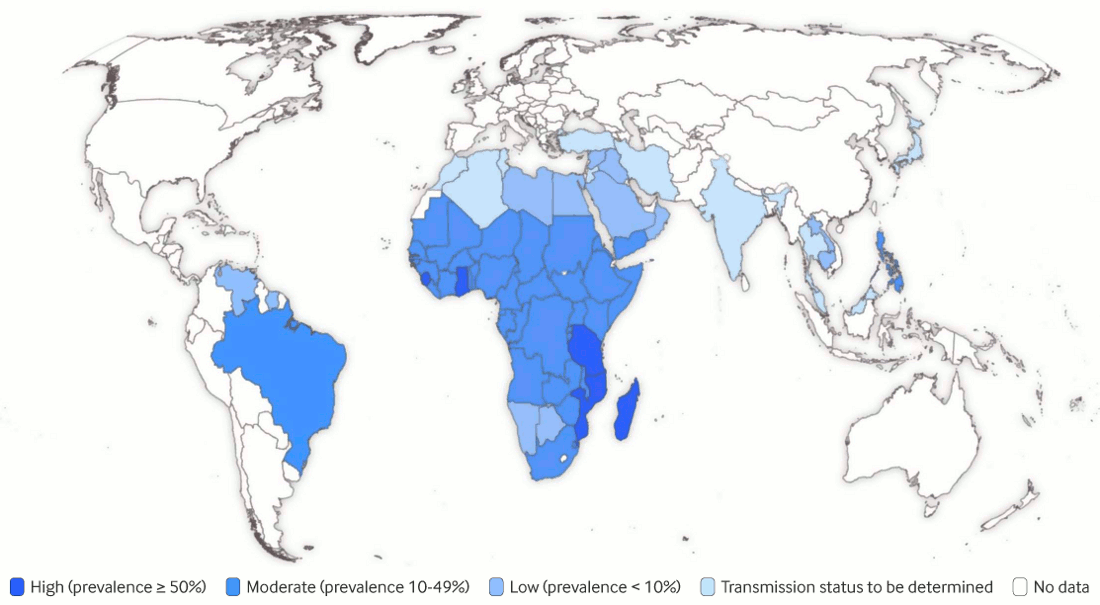Epidemiology
Schistosomiasis predominantly affects low-income populations who do not have access to safe drinking water and adequate sanitation. It is prevalent in tropical and subtropical regions. The African region has the highest burden of schistosomiasis.[4] Model-based estimates suggest that the prevalence in sub-Saharan Africa has significantly decreased, most likely due to the increased use of preventive chemotherapy.[5]
[Figure caption and citation for the preceding image starts]: Map of geographic distribution and prevalence of Schistosoma sppAdapted from Salas-Coronas J et al. Aten Primaria. 2022 Aug;54(8):102408; used with permission [Citation ends].
Worldwide, it is estimated that schistosomiasis affects 240 million people.[2] Approximately 779 million people are at risk of acquiring the infection.[6] A total of 264.3 million people required preventive chemotherapy in 2022 across 50 countries (an increase from 253.1 million in 2021), and 89.1 million people received it (a total coverage of 33.7%). Approximately 91% of people who require preventative chemotherapy live in 41 countries in the African region.[7]
Infection is usually acquired during childhood. The highest prevalence and infection intensity is found in preschool-age children, school-age children, women of reproductive age, and adults and entire communities in high-risk areas.[7]
Increasing numbers of tourists are becoming infected due to the rise in the popularity of ecotourism and adventure travel.[4] The geographic distribution of travel-associated cases reflects travel and immigration patterns. Most travel-associated cases of schistosomiasis are acquired in sub-Saharan Africa.[8]
In the US, the only type of endemic schistosomiasis infection is swimmer's itch (cercarial dermatitis) caused by bird trematodes infesting the northern lakes. It is associated with transient itchy skin lesions but not with systemic manifestations or end organ damage. In the US, bird-specific trematode cercariae are released by their intermediate snail hosts into water where humans may swim. After the initial entry of cercariae into human skin, the bird-specific trematode parasite cannot complete its life cycle and no further disease occurs in the human.[9][10][11] All cases of human acute or chronic schistosomiasis in the US are imported by returning travellers or immigrants from endemic countries.[12]
Schistosomiasis has been reported in Corsica, France, likely due to introduction of the parasite by immigrants, and in Almeria, Spain.[8][13]
Geographical distribution depends on the range of the intermediate snail host:[14]
S haematobium is widespread in Africa, and parts of the Middle East
S mansoni infection occurs primarily in sub-Saharan Africa, South American countries such as Brazil, Venezuela, and Suriname, and the Caribbean, with sporadic cases in the Arabian Peninsula
S japonicum is commonly found in Southeast and East Asia (China, the Philippines, and Sulawesi)
S intercalatum and S guineensis are found in small regions of Central and West Africa (including Democratic Republic of the Congo)
S mekongi occurs in small regions of Southeast Asia (Cambodia and Laos).
Use of this content is subject to our disclaimer